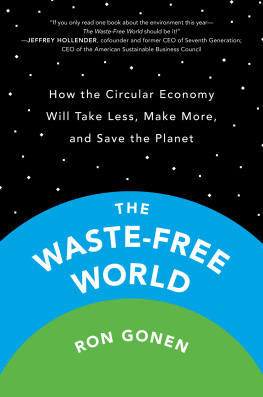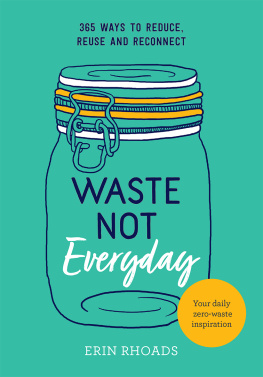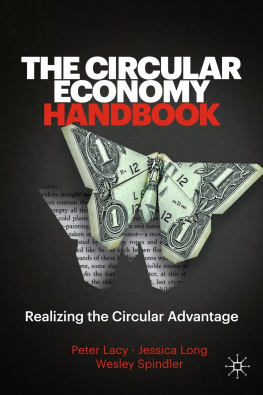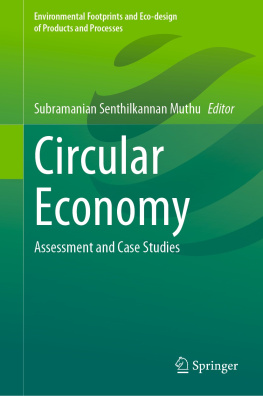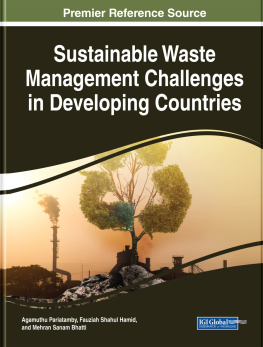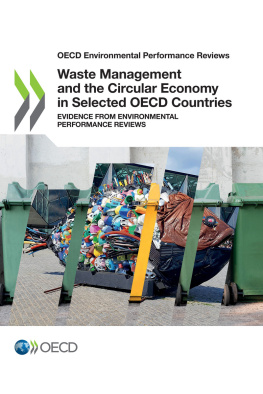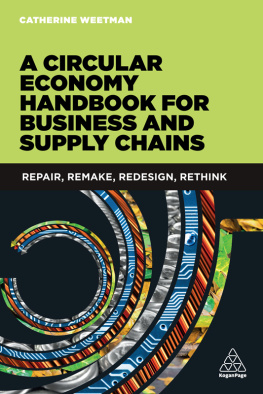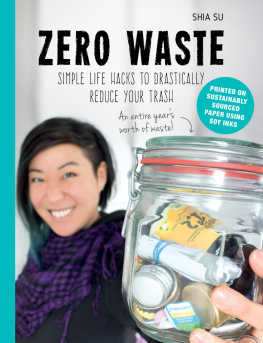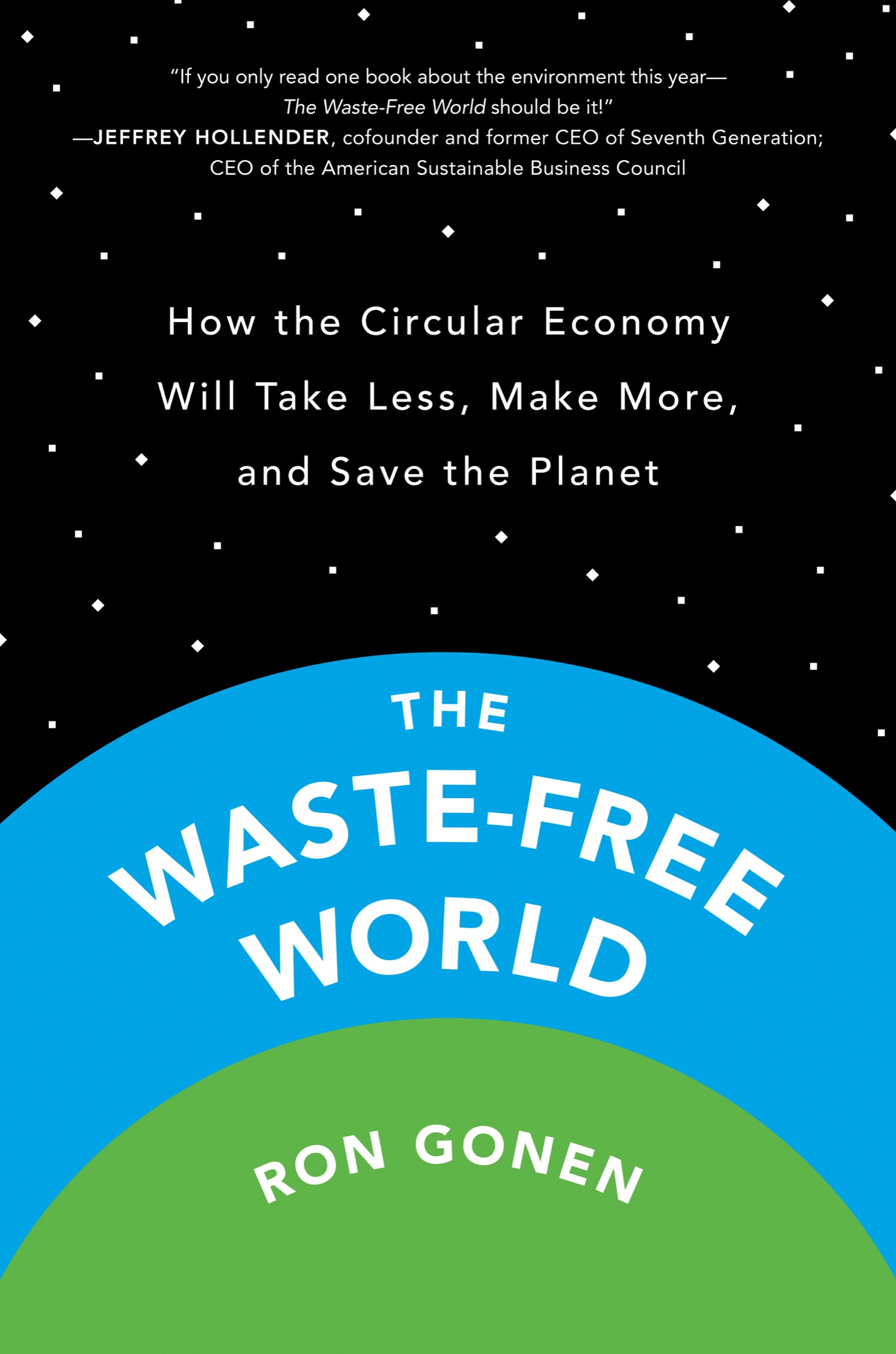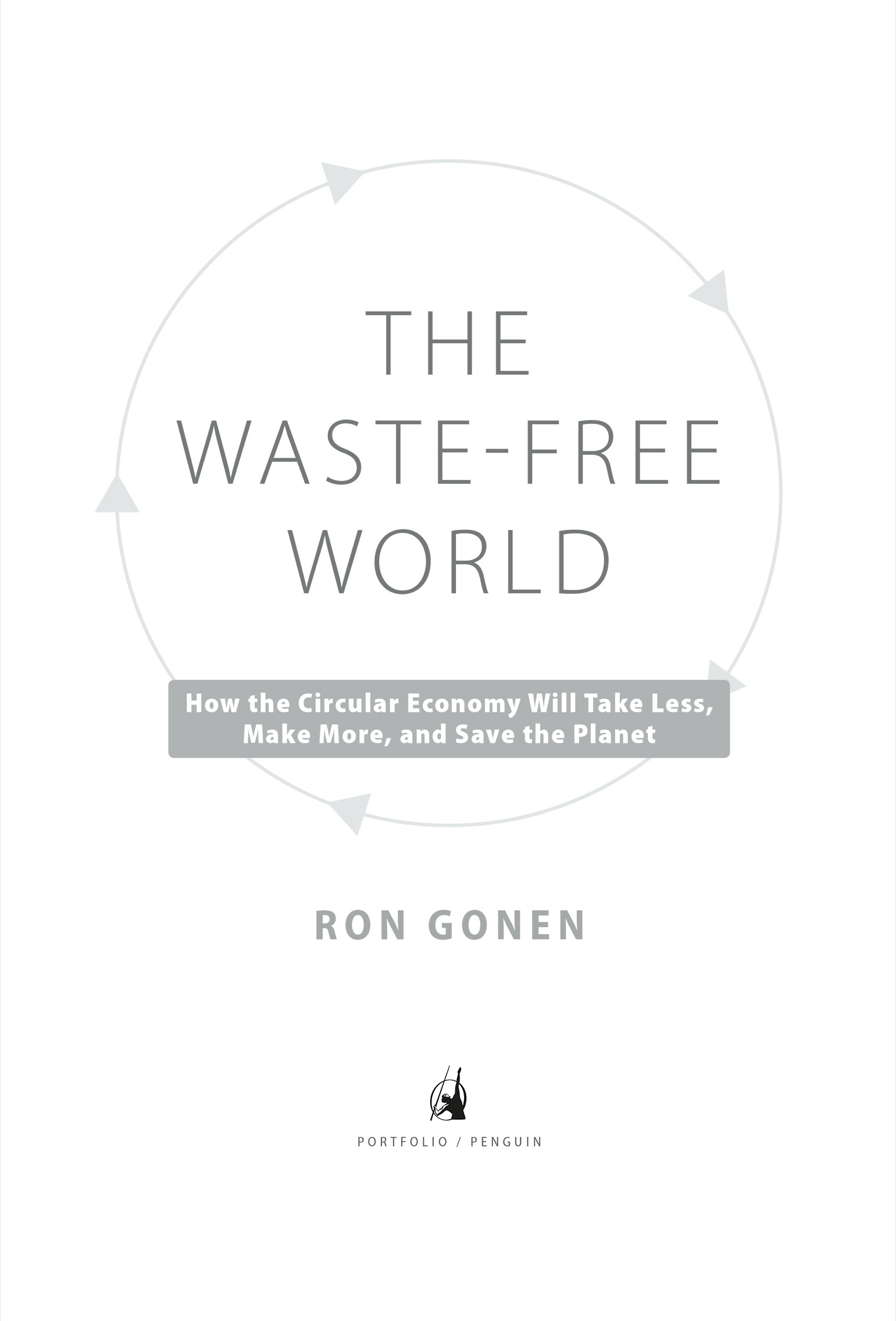
portfolio/penguin
An imprint of Penguin Random House LLC
penguinrandomhouse.com

Copyright 2021 by Ron Gonen
Penguin supports copyright. Copyright fuels creativity, encourages diverse voices, promotes free speech, and creates a vibrant culture. Thank you for buying an authorized edition of this book and for complying with copyright laws by not reproducing, scanning, or distributing any part of it in any form without permission. You are supporting writers and allowing Penguin to continue to publish books for every reader.
Environmental doughnut infographic, Designed for Kate Raworth, by DoughnutEconomics, no changes made, via CC BY-SA 4.0 https://creativecommons.org/licenses/by-sa/4.0/legalcode.
Library of Congress Cataloging-in-Publication Data
Names: Gonen, Ron, author.
Title: The waste-free world: how the circular economy will take less, make more, and save the planet / Ron Gonen.
Description: New York: Portfolio / Penguin, [2021]
Identifiers: LCCN 2020050212 (print) | LCCN 2020050213 (ebook) | ISBN 9780593191842 (hardcover) | ISBN 9780593191859 (ebook)
Subjects: LCSH: Industrial managementEnvironmental aspects. | Business enterprisesEnvironmental aspects. | Sustainable development.
Classification: LCC HD30.255 .G65 2021 (print) | LCC HD30.255 (ebook) | DDC 338/.064dc23
LC record available at https://lccn.loc.gov/2020050212
LC ebook record available at https://lccn.loc.gov/2020050213
Cover design: Brian Lemus
pid_prh_5.6.1_c0_r0
I dedicate this book to my mom who taught me about worth ethic and dedication, to Paul and Linda for their support, and to my wife and children for being my passion.
Contents
Introduction: Beyond Sustainability to Renewal
WALKING ALONG A PATHWAY rimmed on both sides by fields of lush, knee-high green grass, I find myself in awe that Im strolling on terrain once dominated by New York Citys most appalling eyesoreperhaps even more offensive to the nosethe infamous Fresh Kills Landfill. Its recent transformation is a testament to the vigor with which nature can restore the beauty and ecological richness that had been stolen.
Once a vibrant wetland estuary named for its fresh streams, Fresh Kills was foraged in the early twentieth century by a thriving Italian immigrant community seeking wild mushrooms and grapes, dandelions and watercress, its waterways harvested for mud shrimp, steamer clams, and oysters. When the area was selected in 1947 for the dumping of virtually all of New York Citys trash, some Staten Islanders were so alarmed that they proposed the island secede from the city. As feared, the 2,200 acres were transformed into four moldering mountains of foul refuse said to smell like rotting blue cheese. At 250 feet, they towered higher than the neighboring Statue of Liberty, comprising not only the worlds biggest landfill but the largest man-made structure on the planet, their volume exceeding even that of the Great Wall of Chinas.
Finally, after decades of public outcry, the landfill was closed in 2001. New York City then launched a year-long restoration effort, covering vast swathes of refuse with layers of lining, topped with soil and planted with wild grasses, to transform Fresh Kills into a beautifully landscaped park featuring undulating wildflower meadows, kayaking, and canoeing. A profusion of wildlife returned, from butterflies, bees, and bats to blue herons, sparrows, ospreys, owls, and large raptors called fish hawks. Even deer, coyote, and red foxes have ventured into the rapidly rewilding stretches of grassland and forest.
Rounding a bend in the path, I spot the dense foliage of what arborist William Bryant Logan has described as a forest engaged in a furious battle of renewal, with tangles of bittersweet and poison ivy vines tearing down red maple, mulberry, and black cherry strivers, from whose exposed roots new shoots fight their way toward the skya battle known by foresters, Logan explains, as phoenix regeneration. Fresh Kills has become an exemplar of the ecological wizardry by which the natural world, when given the chance, can heal itself. As we enter a new decade, our industrialized human economy has the opportunity to follow natures lead.
Weve Been Scammed
How could the monstrosity of the Fresh Kills Landfill ever have seemed like a solution to the rapidly spiking volumes of refuse Americans began generating during the economic boom that followed World War II? Fresh Kills became the most ludicrous representation of a perverted form of capitalism that established dumping on publicly owned land as an inalienable right of major industries. Its mountains of garbage proliferated, in less glaring fashion, all around the U.S. as industrial and consumer goods giants shirked off responsibility for the horribly wasteful throwaway economy they hooked Americans on. They pass themselves off as free-market capitalists, but their profits are in fact heavily dependent on taxpayers funding the disposal of their products in landfills. Without taxpayers footing that billa modern form of socialismtheir profits would be seriously diminished.
I learned firsthand just how absurd our wasteful system is in 2012, when I was appointed as the Deputy Commissioner for Sanitation, Recycling and Sustainability for New York City. I was tapped by Mayor Michael Bloomberg because I had cofounded a start-up in 2003, Recyclebank, that boosted recycling rates in cities all around the country. I was appalled by the deception perpetrated not only on New Yorkers but on the public all around the countryand on people all over the planetby coalitions of waste profiteers. Theyve richly benefited from a take-make-waste economic system at the great expense of consumers, consumer goods companies, city and town governments, and the health of the planet. In New York City, over $300 million was being spent annually exporting waste to landfills in Pennsylvania, Ohio, and South Carolina. Most of it could have been recycled locally, avoiding this costly tax burden. That $300 million would be enough to nearly double the number of teachers or the number of police officers in the city. Or it could have been used for a tax cut without having adverse effects on municipal services. This literal waste of taxpayer money is repeated in almost every city in the United States. Even in cities with excellent recycling service and participation, far too much waste that could be eliminated with efficiencies in packaging or by being recycled locally is sent to landfills. The result is that for the past few decades, U.S. cities have spent billions on exporting waste that could have been used instead to improve infrastructure and social services.
At Recyclebank, our technology allowed us to offer points to households based on the volume of recyclables they put out in their bin, which could be used to shop at supermarkets, restaurants, and family entertainment spots. When we partnered with cities or individuals that signed up for our service, we explained that the public pays vast sums to landfill companies to haul and dump commodities like paper, metal, glass, and plastic that could be sold to recycling firms. And we showed that neighbors who

